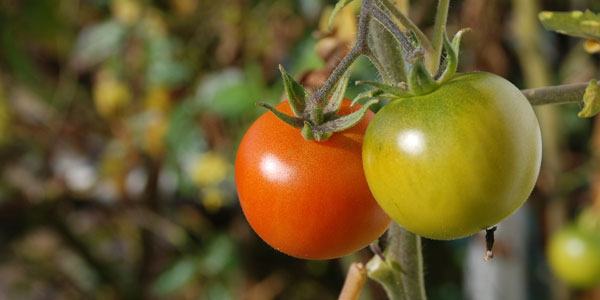
Purchasing packs of tomato plants is more convenient than growing them from seeds, which requires having space indoors in sunny locations to put them and supervising them for three months. But starting them from seeds is cheaper and not difficult, and you’ll be able to buy varieties not available at nurseries.
- Plants or seeds you purchase should be labeled as being resistant to various diseases.
- Whatever you purchase should also be the variety best for your area. It needs to be a good fit for your climate because big, healthy plants produce better-tasting tomatoes.
- Tomatoes are either determinate or indeterminate. Determinates vines, more compact and bushy, grow to a determined point and stop. Indeterminates get bigger and need support but, like determinates, can also grow in containers if a tomato cage or trellis is used.
- Indeterminate varieties are usually preferred where summers are long and warm, while determinates often perform best in cool climates or in situations where you want a concentrated harvest for canning, freezing or drying.
- Heirloom tomatoes date back many years and come in various colors. Their flavor is typically outstanding, but they may not grow well outside the areas where they were developed.
- Tomatoes have simple growing needs: good soil, plenty of sun, and water.
- The healthier the soil, the better the tomato. Provide great mulch and natural fertilizer by planting a cover crop of hairy vetch two months before winter weather sets in. Just before the tomatoes are transplanted in the spring, either till the vetch into the earth or mow it first and collect some of the trimmings to use as a surface mulch before tilling.
- When planting, it’s important to firmly set the root ball of each transplant in soil that underlies the layer of vetch-enriched soil, not in it.
- Tomatoes do best in only slightly acidic soil, so you may also need to add lime to your compost fertilizer if a soil test indicates your soil is overly acidic.
- Frequent seaweed sprays prolong the life and health of plants.
- Water, critical for producing high quality tomatoes, must be applied on a steady basis. Drying delays maturity, reduces yield, and lowers the quality; excessive water, especially in soils with poor drainage, reduces plant growth, increases the incidence of diseases, and dilutes tomato flavor.
- Healthy tomato plants produce lots of foliage, which leads to lots of flavor.
- You can begin planting tomato seedlings when the temperature is a consistent 50° F, though plants won’t begin to set fruit until the overnight low is regularly above 55°.
Insects are usually minor problems. Tomato hornworms are big enough to pick off by hand, and many pests bypass tomatoes because they find them so unpalatable. Where other bugs do wander into the garden, a garlic-based spray or a neem oil extract can be used. Fungi, however, remain a big problem.
Harvest when tomatoes are fully ripened and just starting to soften. Never refrigerate tomatoes but store them in a dark, warm place. Fresh tomatoes start to lose flavor below 55°. Eat them within three days of picking, cook them into sauce, give them to family and friends, to a local shelter, soup kitchen, or food bank.
Related Posts
No related posts.